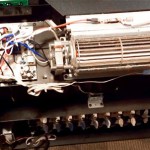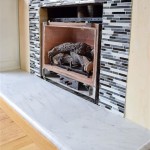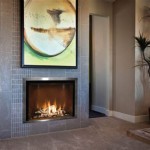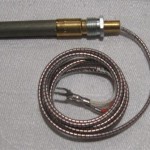Celtic Fireplace Screen: A Functional Art Piece for Hearth and Home
The fireplace, a traditional focal point of the home, offers warmth, comfort, and a sense of gathering. Enhancing its aesthetic appeal while simultaneously ensuring safety requires careful consideration. A Celtic fireplace screen presents a compelling solution, blending practical functionality with the rich artistic heritage of Celtic design. These screens not only protect the surrounding area from sparks and embers but also introduce intricate patterns and symbolism that resonate with history and craftsmanship.
Celtic art, characterized by its complex knotwork, spirals, and zoomorphic representations, has captivated audiences for centuries. Integrating these motifs into a fireplace screen transforms a utilitarian object into a visually striking statement piece. The resulting design complements a variety of interior styles, from rustic to contemporary, adding a touch of timeless elegance and cultural depth.
Safety and Functionality
The primary function of a fireplace screen remains safety. Embers and sparks ejected from a burning fire pose a significant fire hazard, potentially damaging flooring, furniture, and even causing personal injury. A well-constructed fireplace screen acts as a physical barrier, containing these hazards within the firebox and preventing them from escaping into the surrounding room. The mesh material, typically made of sturdy metal such as steel or iron, effectively blocks sparks while allowing heat to radiate outwards, preserving the warmth and ambiance of the fire.
Furthermore, a fireplace screen offers protection against accidental contact with the fire itself. This is particularly important in households with children or pets who may not fully understand the dangers of an open flame. The screen creates a safe distance, preventing burns and ensuring that the fireplace can be enjoyed without undue risk. The screen's construction should prioritize stability and durability, ensuring that it can withstand the heat and potential impact without toppling or failing.
Beyond spark and ember containment, some fireplace screens incorporate features designed to improve the efficiency of the fire. Some models include adjustable dampers or vents that allow for greater control over airflow, influencing the rate of combustion and heat output. This feature can be particularly beneficial in older fireplaces that may not have optimal draft control, allowing for more efficient burning and reduced smoke production.
The Allure of Celtic Design
Celtic art distinguishes itself through its intricate patterns and symbolic representations. Key features include: knotwork (interwoven lines forming complex patterns), spirals (representing growth, eternity, and the cycle of life), and zoomorphic designs (stylized depictions of animals). These motifs are not merely decorative; they carry deep cultural and historical significance, reflecting the beliefs, traditions, and artistic sensibilities of the Celtic people.
Knotwork, perhaps the most recognizable aspect of Celtic art, symbolizes interconnectedness and the eternal nature of life. The continuous lines, woven without beginning or end, represent the cyclical nature of existence and the interdependence of all things. The complexity of the knots varies, ranging from simple designs to elaborate and multi-layered patterns that require considerable skill and craftsmanship to execute.
Spirals, another prominent motif, represent growth, expansion, and the journey of life. Single spirals often symbolize the sun, while double or triple spirals can represent the balance of opposing forces or the stages of life – birth, death, and rebirth. The spiral's dynamic form conveys a sense of movement and continuous evolution, adding a sense of vitality to the overall design.
Zoomorphic designs, often incorporating stylized depictions of animals such as birds, hounds, and serpents, represent specific qualities or attributes associated with those creatures. For example, birds might symbolize freedom or transcendence, while hounds could represent loyalty and vigilance. These animal representations add a layer of symbolic meaning to the design, connecting the fireplace screen to ancient Celtic beliefs and traditions.
Integrating these Celtic motifs into a fireplace screen transforms it from a purely functional object into a work of art. The intricate patterns and symbolic representations add depth and character to the fireplace, creating a focal point that is both visually appealing and culturally significant. The design can be adapted to suit a variety of styles, from traditional Celtic designs to more contemporary interpretations that incorporate modern materials and techniques.
Materials and Construction
The selection of materials and the quality of construction significantly impact the durability, functionality, and aesthetic appeal of a Celtic fireplace screen. Common materials include steel, iron, and brass, each offering distinct advantages in terms of strength, heat resistance, and appearance. Steel and iron are prized for their robust nature and ability to withstand high temperatures, while brass adds a touch of elegance and sophistication.
The mesh material, responsible for containing sparks and embers, is typically made of woven steel or iron wire. The mesh size is crucial, as it must be fine enough to prevent sparks from escaping while allowing sufficient airflow to maintain a healthy fire. Heavier gauge wire provides greater durability and resistance to heat damage, ensuring that the screen will withstand prolonged use without deteriorating.
The frame of the fireplace screen, which provides structural support and defines the overall shape, is often constructed from steel or iron tubing. The frame should be sturdy and well-welded, capable of supporting the weight of the mesh and withstanding potential impacts. Decorative elements, such as Celtic knotwork or zoomorphic designs, are often incorporated into the frame, enhancing the aesthetic appeal of the screen.
Finishing techniques play an important role in protecting the metal from corrosion and enhancing its appearance. Powder coating, a durable and long-lasting finish, provides excellent protection against rust and scratches. Other finishing options include painting, lacquering, and antiquing, allowing for a wide range of aesthetic choices. The finish should be heat resistant and designed to withstand the rigors of fireplace use.
The construction of a Celtic fireplace screen requires skilled craftsmanship and attention to detail. The intricate knotwork and zoomorphic designs demand precision and expertise in metalworking techniques. Hand-forged elements add a unique touch and enhance the overall quality of the screen. The finished product should be both aesthetically pleasing and functionally sound, providing years of reliable service and adding a touch of Celtic elegance to the home.
The selection of a Celtic fireplace screen is a worthwhile endeavor for individuals seeking to enhance both the safety and aesthetic appeal of their hearth. The screen serves not only as a protective barrier but also as a testament to the enduring beauty and cultural significance of Celtic art. By carefully considering the materials, construction, and design elements, one can select a fireplace screen that perfectly complements their home and provides years of enjoyment.

Celtic Fireplace Screens Stained Glass

Celtic Fireplace Screen Keilys Com

This Sy Fireplace Guard Features Steel Construction And An Intricate Celtic Knot That Doors Screens With Rustic

This Sy Fireplace Guard Features Steel Construction And An Intricate Celtic Knot That Doubles As Accent Piec Doors Screens

Shamrock Fireplace Screen Stained Glass

Plow Hearth Metal Fireplace Screen Celtic Knot Pewter 44 W X 33 H Flatguard Spark Guard Indoor Grate Iron Fire Place Cover Wood Burning Stove Deco

Celtic Fireplace Screen Keilys Com

Celtic Mantel Fine Homebuilding

Fufu Gaga Black Iron Twin Door Flat Fireplace Screen Fits Up To 28 In Spark Guard Included 2 Panels At Com

Firescreens Postville Blacksmith
Related Posts








